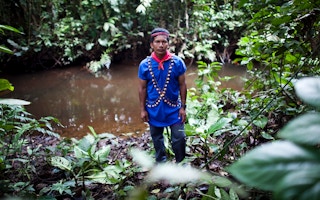More than one-third of the world’s remaining pristine forests, known as intact forest landscapes, exist within land that’s either managed or owned by indigenous peoples, a new study has found.
The study, published Jan. 6 in the journal Frontiers in Ecology and the Environment, builds on previous work by lead author John Fa and his colleagues that mapped out the extent of indigenous-controlled land throughout the world. In the current study, the researchers compared those results with satellite-derived maps showing the locations of intact forest landscapes, or IFLs. IFLs comprise blocks of forests and other naturally treeless areas of land that are at least 500 square kilometres (193 square miles) and have no detectable signs of human use or fragmentation.
Fa, a professor of biodiversity and human development at Manchester Metropolitan University in the U.K., said it was “very interesting indeed that so much IFL is actually found in indigenous lands.”
The team’s analysis also revealed that IFLs haven’t disappeared as quickly from indigenous lands over the past two decades. And indigenous-managed land had more high-quality forest — that is, a higher proportion of IFLs to total forest area — than non-indigenous land in 36 of the 50 countries in the study.
Why those lands have, on average, suffered less loss should be explored further, and it’s a question worth probing, said Fa, who is also a scientist with the Center for International Forestry Research (CIFOR). It could be that indigenous-inhabited lands have lower population densities, he said, and often they’re more remote, making access for further development difficult. In some places, indigenous groups may be actively blocking incursions by the extractive industries.
“We’ve got to go beyond just describing the overlap to actually finding out how these resources are being used, or why there are IFLs in some countries and not others,” Fa said.
Each situation is unique, he added, further pointing to the need to better understand what’s going on. That, in turn, will guide solutions aimed at helping indigenous communities in these places to address problems such as climate change and biodiversity loss.
“What is very important is that because they have all this forest, they should be supported by the international institutions to be able to manage those lands for their benefit and for the benefit of the world,” Fa said.
Victoria Tauli-Corpuz, the U.N. Special Rapporteur on the rights of indigenous peoples, said the study reflects the reality she has seen on the ground, namely that “indigenous peoples do play a very important role in ensuring that their ecosystems are in good health.”
But, she added, “They can even do much better if their rights to continue to manage and control these areas are also respected and protected.”
“
What is very important is that because they have all this forest, they should be supported by the international institutions to be able to manage those lands for their benefit and for the benefit of the world.
John Fa, professor biodiversity and human development, Manchester Metropolitan University
The paper calls for the universal recognition of indigenous peoples’ land tenure rights. Fa said international organizations must also develop policies that take into account the role of indigenous populations in conservation.
Tauli-Corpuz said she sees that as a necessary step, but that high-level commitments must be backed by action on the ground.
“You can really find a lot of good policies,” she said. “The important thing is that these policies are really being implemented.”
This story was published with permission from Mongabay.com.










